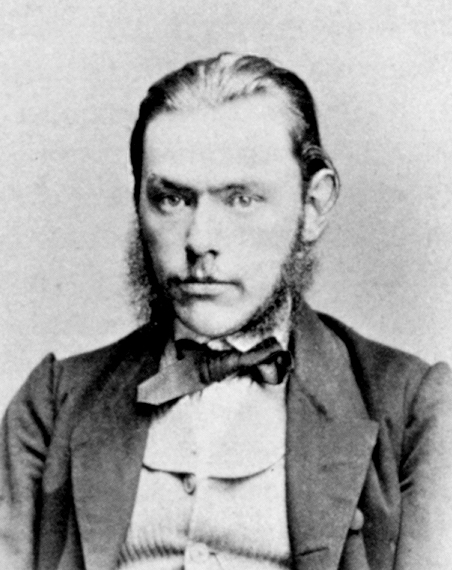Emil Oskar Nobel on:
[Wikipedia]
[Google]
[Amazon]
 Emil Oskar Nobel ( , ; a.k.a. Oscar; 29 October 1843 – 3 September 1864) was a member of the
Emil Oskar Nobel ( , ; a.k.a. Oscar; 29 October 1843 – 3 September 1864) was a member of the
Förfärlig olyckshändelse i Stockholm
Nya Dagligt Allehanda. 3 September 1864 * {{DEFAULTSORT:Nobel, Emil Oskar 1843 births 1864 deaths Emil Oskar Uppsala University alumni Deaths from explosion Industrial accident deaths
 Emil Oskar Nobel ( , ; a.k.a. Oscar; 29 October 1843 – 3 September 1864) was a member of the
Emil Oskar Nobel ( , ; a.k.a. Oscar; 29 October 1843 – 3 September 1864) was a member of the Nobel family
The Nobel family ( , ) is a prominent Swedish and Russian family closely related to the history both of Sweden and of Russia in the 19th and 20th centuries. Its legacy includes its outstanding contributions to philanthropy and to the developme ...
.
Biography
Emil Nobel was born inSaint Petersburg
Saint Petersburg ( rus, links=no, Санкт-Петербург, a=Ru-Sankt Peterburg Leningrad Petrograd Piter.ogg, r=Sankt-Peterburg, p=ˈsankt pʲɪtʲɪrˈburk), formerly known as Petrograd (1914–1924) and later Leningrad (1924–1991), i ...
, Russia. He was the youngest son of Immanuel Nobel (1801–1872) and Karolina Andrietta Ahlsell (1803–1889). He was the brother of Robert Nobel
Robert Hjalmar Nobel ( , ; 4 August 1829 – 7 August 1896) was a Swedish businessman, industrialist and investor. He was the founder of Branobel, and a pioneer in the Russian oil industry.
Biography
Robert Nobel was born in Maria Magdalena p ...
, Ludvig Nobel
Ludvig Immanuel Nobel ( ; russian: Лю́двиг Эммануи́лович Нобе́ль, Ljúdvig Emmanuílovich Nobél’; sv, Ludvig Emmanuel Nobel ; 27 July 1831 – 12 April 1888) was a Swedish-Russian engineer, a noted businessman and a ...
and Alfred Nobel
Alfred Bernhard Nobel ( , ; 21 October 1833 – 10 December 1896) was a Swedish chemist, engineer, inventor, businessman, and philanthropist. He is best known for having bequeathed his fortune to establish the Nobel Prize, though he also ...
. In 1842, Immanuel Nobel opened a workshop with foundry in St. Petersburg returning to Sweden in 1859 with his youngest sons Emil and Alfred. Emil was the only member of the family to go to college, attending the University of Uppsala.
Emil died together with several other factory workers, the victim of an explosion while experimenting with nitroglycerine
Nitroglycerin (NG), (alternative spelling of nitroglycerine) also known as trinitroglycerin (TNG), nitro, glyceryl trinitrate (GTN), or 1,2,3-trinitroxypropane, is a dense, colorless, oily, explosive liquid most commonly produced by nitrating g ...
at Nobels Sprängolja, his father's factory at Heleneborg
Heleneborg is an estate on Södermalm, a part of the city of Stockholm, Sweden. It is opposite Långholmen island (home to Långholmen prison until 1975).
The property was bought in 1669 by Jonas Österling and was used by the Swedish tobacco ...
in Stockholm. At the time, Nobel was a student in Uppsala, but also helped in the factory. After the explosion, production of nitroglycerin was banned in the factory, but continued close to Heleneborg on an anchored barge in a bay of Lake Mälaren.
His brother Alfred was not in the factory at the time of Emil's death but later managed to stabilize dynamite with a diatomaceous earth
Diatomaceous earth (), diatomite (), or kieselgur/kieselguhr is a naturally occurring, soft, siliceous sedimentary rock that can be crumbled into a fine white to off-white powder. It has a particle size ranging from more than 3 μm to ...
called kieselguhr.
References
Other sources
Förfärlig olyckshändelse i Stockholm
Nya Dagligt Allehanda. 3 September 1864 * {{DEFAULTSORT:Nobel, Emil Oskar 1843 births 1864 deaths Emil Oskar Uppsala University alumni Deaths from explosion Industrial accident deaths